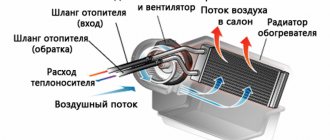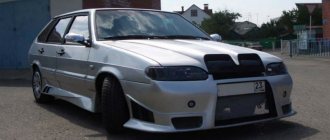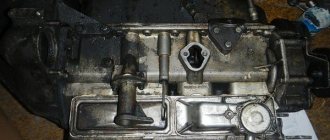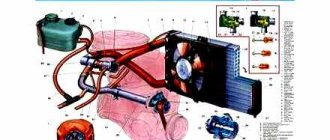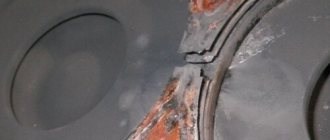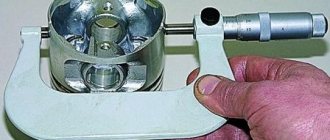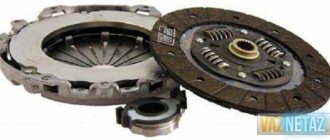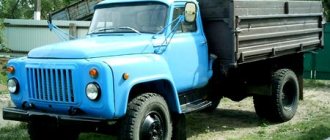Removing excess heat from the engine is an important step in the operation of the internal combustion engine. For such a process, a cooling system is provided, which includes the cylinder block channels (jacket), radiators and connecting pipes with pipes. When antifreeze is used for a long time, the risk of limescale deposits forming in the passage channels increases.
Timely flushing of the standard radiator, as well as the stove, helps to get rid of contaminants faster and better. You can carry out the procedure in a garage yourself either by removing the equipment from the car or without removing it. It is preferable to do this in the spring.
The need to flush the cooling system
The motorist should pay attention to indirect signs indicating possible problems with the operation of the cooling system. Mandatory flushing of the installed radiator for the car heater and the main radiator (without removal or with removal) can be carried out when the fan is constantly running. There is a high probability of contamination or complete blockage of technical channels.
Important! It is necessary to eliminate problems with the performance of the cooling system as soon as possible after they are identified, otherwise malfunctions in the operation of the internal combustion engine will occur.
Indirect signs indicating the need to clean the main radiator or the interior radiator (for the stove) are the following factors:
- slow response to signals from the rheostat;
- frequent overheating of the engine with further difficulties in starting the internal combustion engine;
- extremely rapid rise in temperature in the cooling system after turning on the ignition and starting the internal combustion engine;
- the pump built into the system works with obvious interruptions;
- The color of the antifreeze in the expansion tank has changed.
If one or more of the described symptoms is detected, the motorist must replace the coolant by draining it completely. It is also worth washing with homemade solutions or cleaning cavities using professional auto chemicals.
Causes of pollution
Before choosing what to effectively flush the radiator of a car heater with, you need to find out what causes the problem. Negative factors can be different. It is worth simultaneously taking into account the processes that accompany the cooling system.
Due to high operating temperatures, antifreeze is subject to boiling, and for normal circulation the volume of liquid specified by the manufacturer is required. If it is lower, this fact will negatively affect the performance of the motor. In this regard, drivers independently periodically top up to the required level.
When partial boiling of the volume occurs, a coating forms on the internal surfaces. Over time, its layer can thicken and impede the passage of coolant.
Plaque formation on the heater radiator
The following phenomena can also be popular reasons for the formation of pollution:
- chemical deposits formed during prolonged operation of the engine on one volume of antifreeze;
- particles of dust and mechanical impurities penetrating the system;
- crystallization of salts from added ordinary water;
- The radiator will also have to be cleaned if there are pockets of corrosion that contribute to the loss of solid sediment particles.
Before rinsing the aluminum radiator of the car heater, you should pay attention to the color, transparency and smell of the liquid. Their change is a signal for replacement and cleaning. The composition must not be brought to the consistency of an emulsion.
Using scrap materials
Cleaning the heater radiator without removing it should be carried out for cars with high mileage approximately once a year. Experienced motorists previously carried out technical work with acidified or alkaline water. The selection of concentration and intensity of treatment depends on the degree of contamination of the channels.
Ignoring contamination can lead to problems with your car:
- the water pump is clogged;
- The distillate heater fails;
- The stability of the interior heating is lost.
After cleaning, a washed aluminum or copper radiator should have all types of contaminants removed as much as possible, including organic particles, mechanical contaminants and corrosion deposits. Such work in a car service center, depending on the make of the car, will cost between 1500-5500 rubles. Premium cars are more expensive to maintain.
Why is it necessary to flush the engine cooling system?
Initially, you need to understand why to do this. Novice drivers may not realize that the engine cooling system needs periodic flushing. In this case, it is possible to use special liquids or traditional methods, which have also proven to be effective. If you don’t have the time to do the work yourself, you can contact a service station.
If you do not take this action, scale, rust and other deposits will appear on the inside of the tubes. They reduce the quality characteristics of the unit and also reduce its service life, and replacing a motor is not cheap today. Thus, the wear rate of individual components increases.
Important . There are two types of flushing: external and internal. External involves removing particles of dirt, dust, and so on. It must be performed as needed. To do this, you can use a cloth and a non-aggressive cleaning agent. Although, many make do with water. Internal is required at least once a year for the normal functioning of the motor. In this case, it is better to wash it in the spring, when the cold weather has passed.
There are several signs that allow you to determine that it is time to carry out technical work:
- the motor often overheats;
- problems are observed in the operation of the pump;
- the sensor constantly shows increased temperature;
- there is a problem with the radiators;
- The fan load increases to maximum.
Internal cooling system flushing is required at least once a yearInternal cooling system flushing is required at least once a year
Lemon acid
One popular technique is cleaning with citric acid. The accessibility of the method is ensured by the low cost of bags of granules. The optimal concentration is considered to be a solution prepared from 10 liters. water, pre-boiled and 200 g of granules.
When the substance is completely dissolved, the portion can be poured directly into the system through the expansion tank. It is important not to exceed the permissible fluid level. In order for a chemical reaction to occur, it is advisable to bring the engine to operating temperature and drive several kilometers on this composition.
During this process of flushing the cooling channels and radiator, it is necessary to monitor the temperature. The maximum effect is achieved at values close to 800C. After flushing with an acidic liquid, it is necessary to drain it and clean it with distilled water, and only then fill the system with antifreeze.
Products for home use
With proper care and preventive maintenance, cleaning the cooling system is not difficult. Before starting the procedure, you need to prepare it:
The engine is cooled if it was running before.- Place a container for old antifreeze under the drain.
- Unscrew the plugs from the bottom of the radiator and cylinders.
- Wait until the liquid is completely drained from the system.
- The drain plugs are screwed back in.
- Fill the expansion tank with cleaner.
Distilled water
If over the past years the car has been kept in order and preventive washes have been carried out, then the use of distilled water is considered sufficient.
It is poured into an empty expansion tank . The amount of distillate must correspond to the volume of the container. After this, start the engine for 10-25 minutes.
For best results, it is recommended to take a test ride. After turning off the car, allow time for cooling and drain the water from the tank.
Lemon acid
This product helps to cope with a small degree of contamination. To prepare the working solution, citric acid is dissolved in water .
The standard proportion is 30-40 g per 1 liter. To enhance the effect, prepare a more concentrated solution, increasing the dose of powder to 80-100 g. The optimal pH value of the lemon reagent is 3.
After the cleaner is poured into the tank, turn on the engine and warm it up for 15-25 minutes. Leave the reagent in the system for 5-12 hours. When draining the solution, visually check the degree of contamination . If necessary, the cleaning procedure is duplicated.
You can learn more about the use of citric acid in the fight against rust here.
The video will show you how to flush the cooling system with citric acid:
Vinegar
For washing, use vinegar with a concentration of 9% . For 5 liters of water you need a glass of acid (250 ml). This cleaner is used by analogy with citric acid.
The acetic reagent is poured into a container from which the antifreeze has previously been drained. Fill the tank with the prepared solution, start the engine for 20-30 minutes. The acetic liquid is drained after 8-12 hours. Flush the system with distillate and fill it with new refrigerant.
You can learn more about the use of vinegar in the fight against rust in this article.
Milk serum
For work, use store-bought or homemade serum . In the latter case, the liquid must be filtered through several layers of gauze so that no curdled inclusions remain in it. The serum should not be diluted with water before use.
The washing solution is prepared from soda ash (8-10%) and caustic (3%) soda.
The powder is diluted with water, its amount in the solution should be 85-90% . After filling the tank with soda reagent, the car is driven 50-100 km. Then the cleaner is drained and the distillate is passed through several times.
Whey from milk
Since plenty of fresh whey can be found in rural areas, lactic acid cleansing may be an option for local residents. The finished composition is poured into the system and the engine is allowed to run for about 30-35 minutes at medium speed. To do this, you can make a short trip without stopping.
It turns out that it is homemade rather than store-bought whey that is more effective in the work. To get rid of solid particles, you will need to pre-filter it several times. You can use several layers of gauze or a fine-mesh sieve.
The product should not be diluted with water. After filling the heating system, experts recommend driving 5-10 km. It is also worth rinsing while traveling to get rid of possible caked particles.
How to flush the radiator from the inside
Before flushing the engine radiator, the existing coolant must be removed from it (as well as from the entire system). Therefore, you will need a suitable container and, of course, new antifreeze if it is this and not water that will be poured into the system.
Liquid is drained from the cooling system on all cars through special taps. In addition, it is also worth disconnecting the pipes from the radiator in order to remove it completely.
After that, everything is connected back, the taps are tightened and the selected cleaner is poured through the radiator neck. In most cases, you need to let the engine run for 15 to 30 minutes, then drain the cleaner in the same way as you drained the antifreeze before.
Using soda
In search of something that can quickly clean the radiator of your car, car owners come across the option of using soda. Washing is carried out using both caustic soda (caustic soda) and other alkaline preparations.
It is enough to use this technique once every two years or after every 30-40 thousand kilometers. It is worth paying attention to the concentration of the composition for different alkaline preparations:
- for caustic soda, the composition should not exceed 3%;
- soda ash is usually increased to 7-10%;
- baking soda is also diluted to 10%.
Both distilled and boiled water are used as the main liquid. It is advisable to travel several tens of kilometers with such trains. To avoid a chemical reaction with aluminum or copper that is part of the radiator and stove, it is not recommended to keep such a solution in the system for more than a day.
Methods for cleaning the system yourself
Cleaning is carried out in two stages.
- The first stage is external cleaning: the cooling radiator, fan and grille are washed from debris, dust, and adhering dirt.
- At the second stage, internal cleaning is carried out using special products.
To understand how to clean the cooling system of any engine from rust, it is necessary to conduct a visual analysis of the drained fluid from the installation. Its color and the presence of foreign contaminants will tell you how to wash the mechanism. Dark color, greasy spots, rust particles indicate severe contamination.
In this case, it is advisable to use an acidified solution. For a light shade without obvious precipitation, it is enough to use distilled water.
Rinsing with distilled water
The work begins with draining the waste liquid. To do this, the car is equipped with a valve on the radiator and a special bolt on the engine block. Next, you need to fill in distilled water and start the car. After 20 minutes of operation at low speeds, turn off the engine and drain the water. Based on the condition of the water, we determine the need for re-rinsing:
- if the water is clean, fill in the prepared antifreeze mixture;
- if dirt is present, flush the system again.
Lemon acid
Used in cases of corrosion and severe contamination of radiator elements.
The effective action of the component begins after the engine warms up to 70 - 80 degrees. In order not to damage metal and rubber parts, the solution must be prepared in the following proportions:
- For every 5 liters of water you need to add 100 - 120 grams. citric acid;
- 80 - 100 gr. - for 4 liters of water.
Application of the solution.
First you need to drain all the water from the radiator and cylinder block. After this, fill in the prepared solution, start the engine and warm up to 80 degrees. The total procedure time should be within 30–40 minutes. The procedure ends with complete draining of the solution and additional rinsing with distilled or boiled water. This is done to completely remove any remaining solution.
Washing with caustic soda
The method is suitable for copper radiators of the cooling mechanism. The method must not be used if aluminum parts are installed.
Method of use:
- 50 - 60 gr. soda is diluted in 1 liter of water;
- wash the dismantled radiator with the mixture.
After use, the device must be rinsed with boiled water.
Automotive chemicals used
In auto stores you can find products that are created industrially. Leading manufacturers offer both one-component and two-component formulations. It is important that during the processing process do not use two different products at the same time.
BARDAHL COOLING SYSTEM FAST FLUSH will cost about 500 rubles. The bottle includes 300 ml. This container is enough for one wash, during which it is possible to get rid of scale, rust, and scale.
This chemistry is practically neutral to rubber seals, plastic and metal. The solution is suitable for all types of engines and is an excellent example of a balance between price and quality.
KUHLER-REINIGER is estimated at up to 800 rubles. The metal container is 300 ml. The composition copes well with contaminants, neutralizes acids and is intended for dilution in 10 liters. water.
VERYLUBE costs about 300 rubles. Convenient, economical packaging contains 250 ml of product. During operation, it forms an anti-corrosion film on the inside of the radiator.
